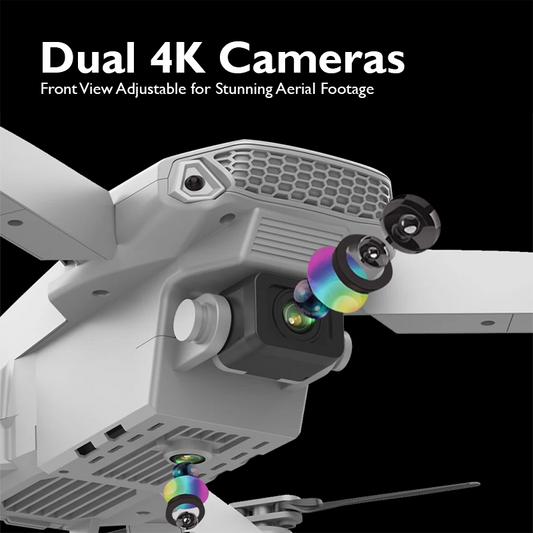The Use of Drones in River and Lake Monitoring

In the realm of environmental conservation, technological advancements have become invaluable tools in our quest to protect and preserve delicate ecosystems. Among these innovations, drones have emerged as powerful allies, offering a unique perspective and an array of capabilities for monitoring various natural habitats. One area where drones have proven particularly effective is in the monitoring of rivers and lakes, providing researchers and conservationists with unprecedented access and insights into these vital water bodies. In this article, we delve into the use of drones in river and lake monitoring, exploring their applications, benefits, and the transformative impact they have on environmental conservation efforts.
Understanding the Role of Drones in River and Lake Monitoring

Drones, also known as unmanned aerial vehicles (UAVs), have transformed the way we observe and analyze natural environments. Equipped with high-resolution cameras, thermal imaging technology, and advanced sensors, drones offer a bird's-eye view of rivers and lakes, capturing detailed data that would be challenging or impossible to obtain through traditional methods. From mapping water quality to assessing habitat health, drones play a crucial role in monitoring the condition and dynamics of aquatic ecosystems.
Applications of Drones in River and Lake Monitoring
1.Water Quality Assessment:

Maintaining water quality is essential for the health of aquatic ecosystems and the well-being of surrounding communities. Drones equipped with specialized sensors can collect data on parameters such as pH levels, dissolved oxygen, turbidity, and nutrient concentrations. By conducting regular aerial surveys, researchers can identify pollution sources, monitor algal blooms, and track changes in water chemistry over time. This data enables informed decision-making and targeted interventions to mitigate pollution and safeguard water quality.
2.Habitat Mapping and Classification:

Understanding the spatial distribution of habitats within rivers and lakes is vital for biodiversity conservation and ecosystem management. Drones equipped with high-resolution cameras can capture detailed imagery of aquatic habitats, including submerged vegetation, riverbanks, and shoreline features. Through image processing techniques such as photogrammetry and machine learning algorithms, researchers can create accurate habitat maps and classify different habitat types. This information aids in habitat restoration efforts, habitat conservation planning, and the assessment of habitat suitability for various species.
3.Monitoring Hydrological Dynamics:

Rivers and lakes are dynamic systems influenced by factors such as flow patterns, sediment transport, and water levels. Drones equipped with LiDAR (Light Detection and Ranging) technology can generate precise topographic maps of river channels and lake basins, revealing changes in morphology and hydrological features. Additionally, drones can monitor flood events, erosion, and sedimentation in real-time, providing early warnings and valuable data for flood risk management and watershed planning.
4.Wildlife Monitoring and Conservation:

Aquatic ecosystems support a diverse array of wildlife, including fish, amphibians, birds, and aquatic mammals. Drones offer a non-invasive method for conducting wildlife surveys and monitoring population dynamics. Thermal imaging cameras mounted on drones can detect heat signatures, allowing researchers to locate and count animals, especially in challenging or inaccessible habitats. This information contributes to species conservation efforts, habitat protection, and the assessment of wildlife responses to environmental changes.
Benefits of Using Drones in River and Lake Monitoring

1.Cost-Effectiveness:
Traditional methods of river and lake monitoring often involve labor-intensive field surveys, which can be time-consuming and expensive. In contrast, drones offer a cost-effective alternative, allowing for rapid data collection over large areas with minimal personnel and equipment requirements. By reducing operational costs, drones make continuous monitoring and frequent data collection more feasible, enhancing the efficiency of conservation efforts.
2.Accessibility and Versatility:
Drones are highly maneuverable and can access remote or inaccessible areas that are challenging to reach on foot or by boat. This accessibility is particularly advantageous for monitoring rivers and lakes in rugged terrain or densely vegetated regions. Moreover, drones can be equipped with a variety of sensors and payloads, allowing for customizable monitoring solutions tailored to specific research objectives and environmental conditions.
3.Safety and Reduced Environmental Impact:
By conducting aerial surveys, drones eliminate the need for researchers to enter potentially hazardous or environmentally sensitive areas. This improves safety for personnel and minimizes disturbances to wildlife and fragile habitats. Additionally, drones operate quietly and produce minimal carbon emissions compared to manned aircraft or motorized boats, reducing their environmental footprint and mitigating potential negative impacts on ecosystems.
The utilization of drones in river and lake monitoring represents a significant advancement in environmental science and conservation practice. From assessing water quality to mapping habitats and monitoring wildlife, drones offer unparalleled capabilities for gathering data and informing management decisions. As technology continues to evolve, the integration of drones into monitoring protocols will become increasingly common, revolutionizing our ability to understand, protect, and sustainably manage freshwater ecosystems. By harnessing the power of drones, we can embark on a path towards more effective and comprehensive conservation efforts, ensuring the health and vitality of our rivers and lakes for generations to come.
Explore a variety of drones at our online drone store.
Happy Flying!











